
Cao Bang
How to travel to Cao Bang for your best experience
Cao BangTravel Guide – What to do, when to visit, and more…
280km far from Hanoi, sits on the northeast border with China, Cao Bang Province is an immensely mountainous area bursting with beautiful geo-cultural sites, in which most of them have been protected as a UNESCO Global Geopark since 2018. The landscape here is typified by jagged mountains carpeted in thick vegetation, sporadic rice paddies and thin winding roads. As the climes are cool, the forests are verdant and the air is fresh, Cao Bang is a great natural escape which leaves visitors feeling relaxed and full of appreciation for the beauty of nature.
Frequently asked questions
280km far from Hanoi, sits on the northeast border with China, Cao Bang Province is an immensely mountainous area bursting with beautiful geo-cultural sites, in which most of them have been protected as a UNESCO Global Geopark since 2018. The landscape here is typified by jagged mountains carpeted in thick vegetation, sporadic rice paddies and thin winding roads. As the climes are cool, the forests are verdant and the air is fresh, Cao Bang is a great natural escape which leaves visitors feeling relaxed and full of appreciation for the beauty of nature.
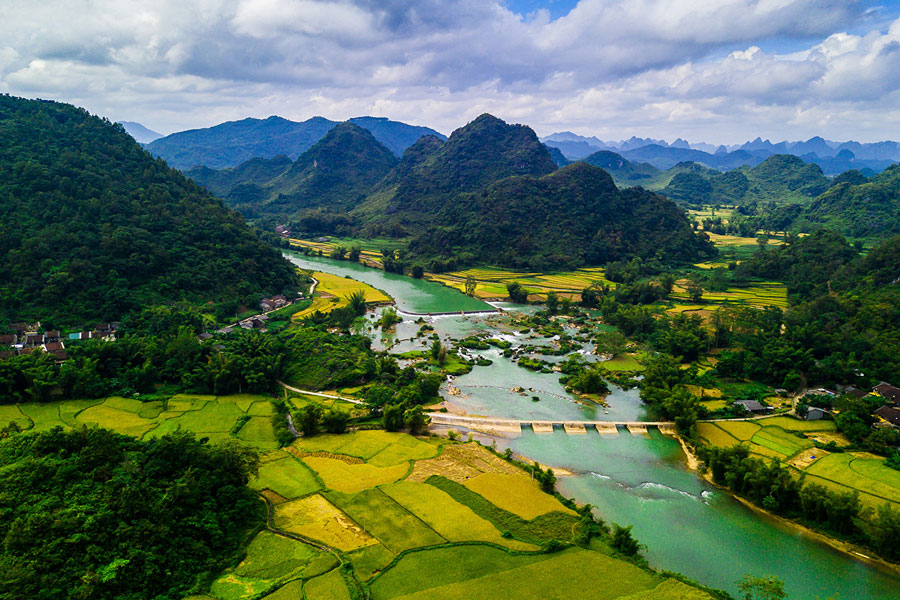
More interestingly, Cao Bang was the land of revolutionary traditions of Vietnam, wherein every forest and every road are all associated with the early stages of Vietnamese revolutionary history and the President Ho Chi Minh’s life.
Also as home to various ethnic minority communities in Vietnam such as Nung, Dao, Tay and H’mong, who live up to their distinctive traditional practices, Cao Bang is a spectacular place to experience the less-known world of cultures in Vietnam. If you can’t wait to see Cao Bang, let’s find out how to travel to Cao Bang for your best experience in this article.
1. Holding your breath at Ban Gioc Waterfalls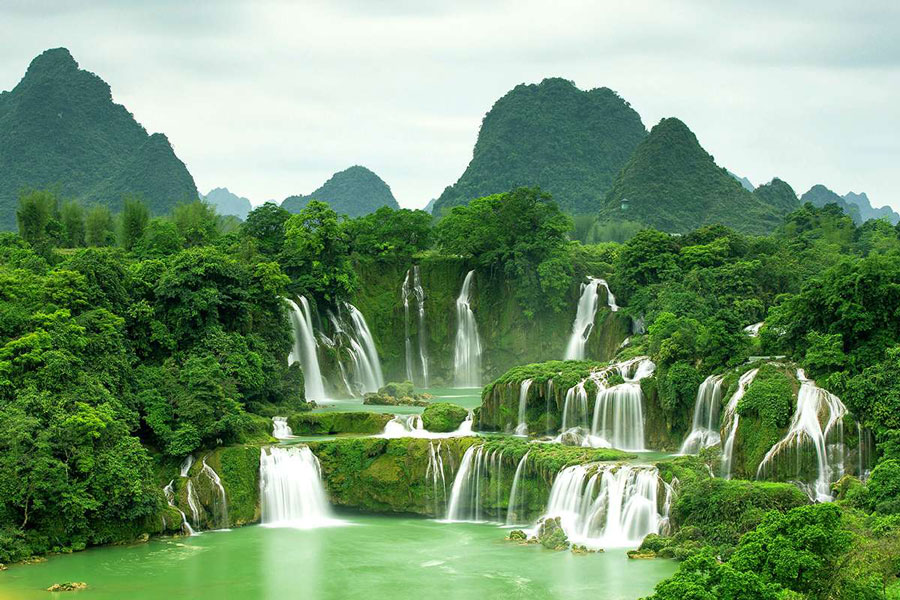
Located on the border between China and Vietnam, without a doubt, Ban Gioc Waterfalls are the number one attraction in Cao Bang. As the fourth largest waterfall in the world, measuring 300m wide, the falls crash over the 30m creating a roaring which echoes across the land. Set in a striking valley and surrounded by lush jungle, Ban Gioc feels like a paradise of its own with the vast area and range of different falls and pools within the park that captivate the witnessed eyes. When exploring the cave, tourists will be surprised at the amazingly beautiful scenes of rock formations and immense nature scenery.
2. Be amazed at Nguom Ngao Cave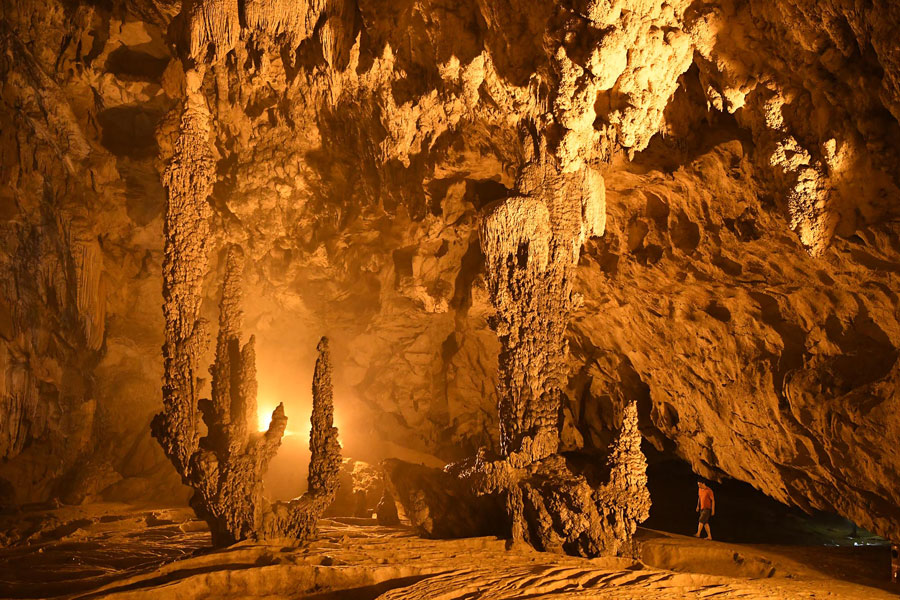
Which can be found just a short distance away from Ban Gioc Waterfalls, the Nguom Ngao Cave stretches over 2km and has some of the most unique stalactite formations in Southeast Asia. The name itself roughly translates to ‘Tiger Cave’ and for a long time the cave lay dormant as local legend told of tigers who inhabited the cave. The story is what it was, however, those who enter the cave are only met with stunning scenes of rock formations. As you step foot into the cave, the formations change with each new cavern. Going further, visitors will see the cave is filled with stalactites and stalagmites in differing shapes and sizes, their forms emerging from the cliff face and often depicting mythical creatures or magical scenes.
3. Excitingly boating around Thang Hen Lake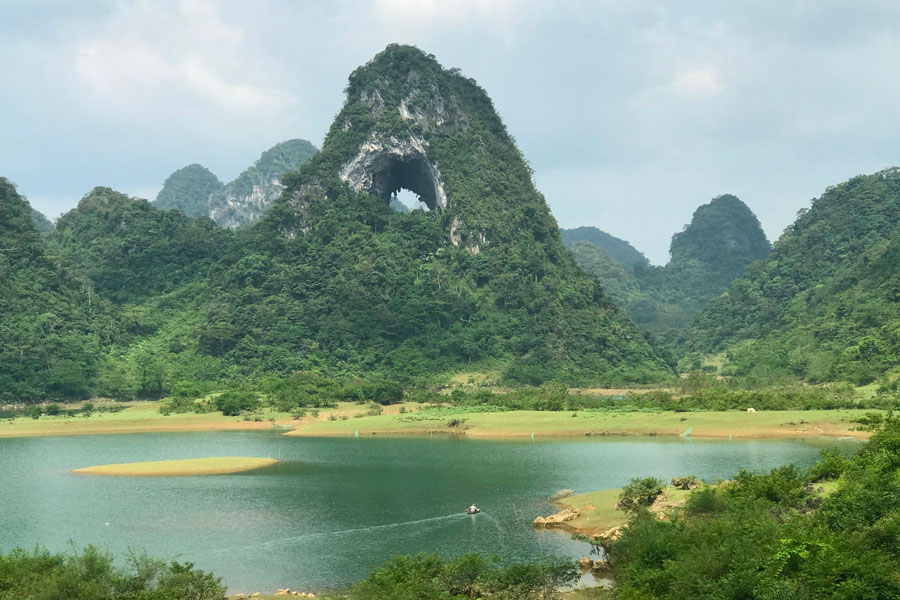
Sits in a tranquil valley surrounded by rocky, forested mountains, the Thang Hen Lakes are made up of 36 miniature lakes that are all connected through caves and underground passageways. The colours of the turquoise blue waters and rich green trees are intensified by the bright sun on clear days. The lake is peaceful; the still air is only disturbed by the horses grazing idly and birds dipping through the sky. The lake is actually made up of 36 different lakes, but during the rainy seasons when the lakes swell, they flow into one another creating one large expanse of water. Small wooden boats wait on the shores of the lake to take visitors on a voyage around the lake, the perfect way to bask in the beauty of both the mountains and the lake.
4, Appreciating the Pac Bo Cave – The relic complex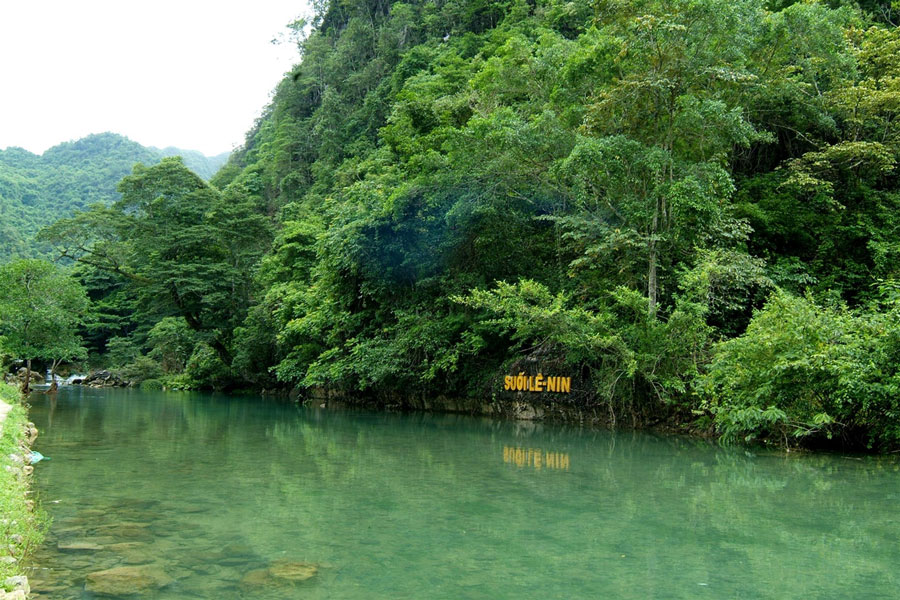
The story about this place is not only about its incredible beauty but also the Ho Chi Minh’s sanctuary after his return from exile in China. The setting is certainly an inspiring one, the birdsong and peaceful ambience are the perfect accompaniment for contemplation. After a pleasant walk past Karl Marx Peak and Lenin Creek (named by Ho Chi Minh), you will find the entrance of the leader’s hideout. The cave still displays Ho Chi Minh’s modest living conditions settled in amongst the fascinating karst rock formations. It was here the national treasure spent his days writing poetry and reading and translating the texts of leaders he admired. This tasteful tribute to the life and work of Ho Chi Minh is an important pilgrimage spot for the Vietnamese.
5. Finding peace at Truc Lam Phat Tich Pagoda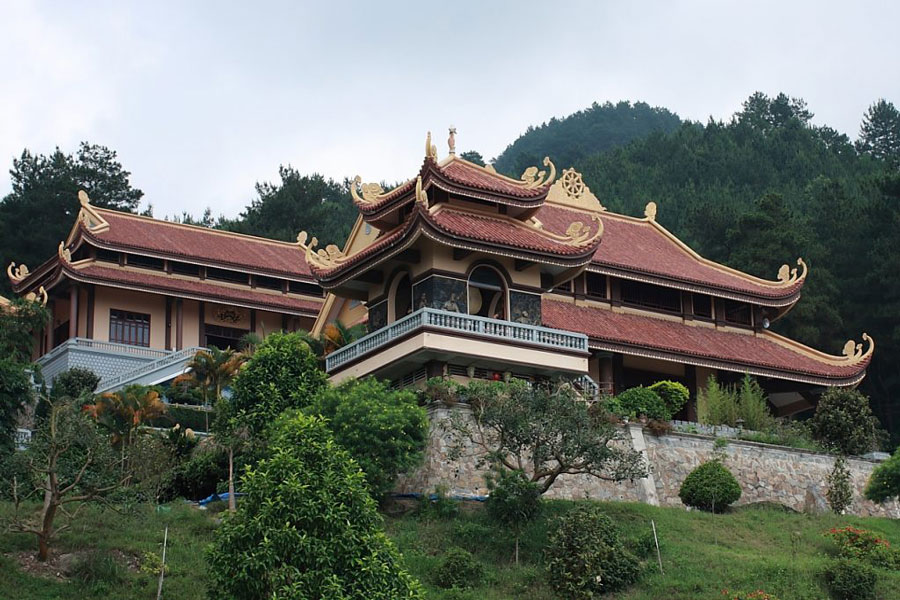
Considered as the first pagoda in Northern Vietnam (not far from Ban Gioc Waterfalls as well), Truc Lam is built based on the traditional Vietnamese architecture which fits perfectly into the hillside. As you climb higher to the main temple area passing a three-door gate, you will witness the holy Guan Yin statue. From that view, a valley filled with karsts unfolds below making a great scenery of natural beauty and religious place of Cao Bang.
6. Trekking the awesome Phia Oac – Phia Den Forest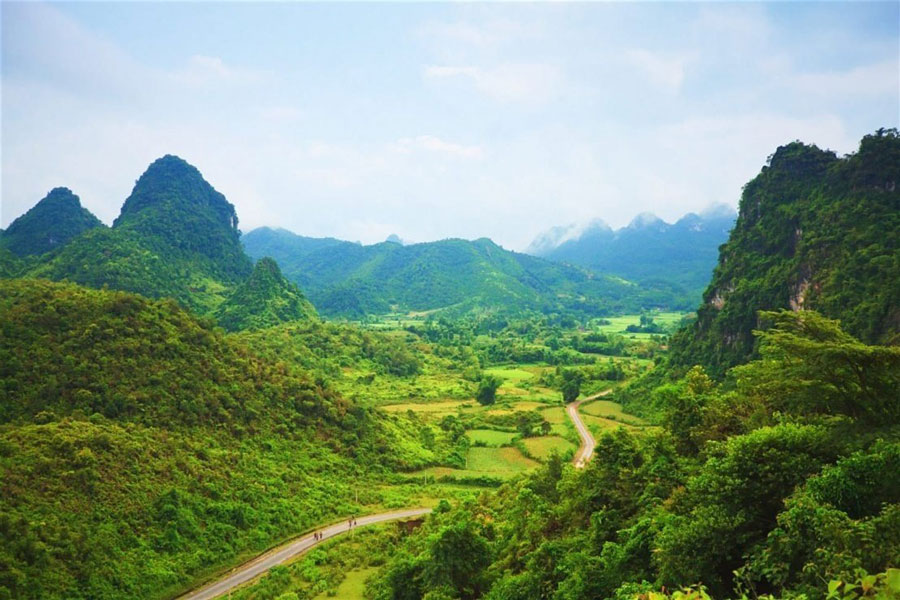
With a peak of 2,000m above sea level, Phia Oac – Phia Den is a special-use forest, the roof of Cao Bang province and also a valuable heritage of the northeast of Vietnam. Not only owning beautiful landscapes of diverse forests, nature reserves, national parks and huge salmon aquaculture, Phia Oac – Phia Den is also the source of five large rivers in the area that facilitates the Ta Sa Hydropower Plant. Trekking the trail of more than a dozen kilometers snaking its way through the mountains with many dangerous bends from Phia Den to the peak of Phia Oac Pass is an awesome challenge for adventurous travelers. Yet surprisingly, Phia Oac receives snow in winter which creates a stunning scene and unique vegetation for this land.
7. Learning something new at Phuc Sen Forge Village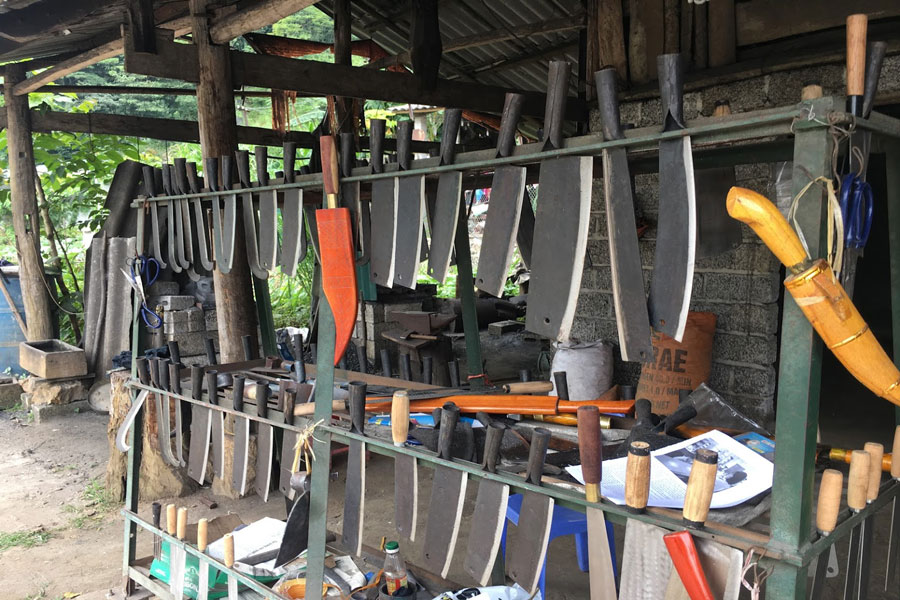
Forging is a traditional work of the Nung people, an occupation they have been perfecting for hundreds of years. There are a variety of tools made by the local people on sale along the two-kilometer road after you enter the gate of the village. Go deep inside the village, and you can see the burning furnace, flaming fire pots, and working scene in every corner. There are many unique features of the forging industry. You must choose good steel ingots, the process of making the steel varies, and the unique technique characteristic of each family in this area all contribute to quality and diverse products. The main products of this village are the knife, scissors, hoe, and sickle which are the main tools of the local farmers. Forging is the leading economy for the local people here and it has become the traditional culture of this land.
8. Joining the lively Pac Mieu Market
Pac Mieu is one of the busiest markets in Cao Bang, regularly taking place on the 1st, 5th, 10th or 15th day of the lunar month. People from ethnic minority communities gather at the markets to trade and sell everyday items such as the fresh food and unique goods such as traditional apparels. This is where you should visit to experience local culture in Cao Bang while staying here.
1. Peng Ray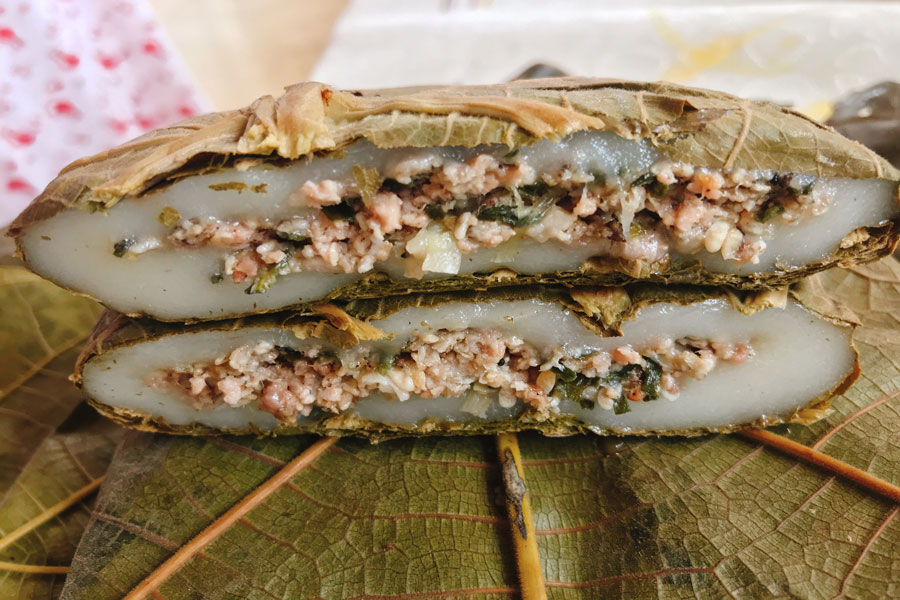
Which translates to ant egg cake, is a seasonal delicacy for the Tay community in Cao Bang. Each year they gather the ant eggs from the nearby forests from April to May. The eggs are encased in a glutinous rice cake and wrapped in fig leaves. The dish is popular for its high nutritional value.
2. Cao Bang Duck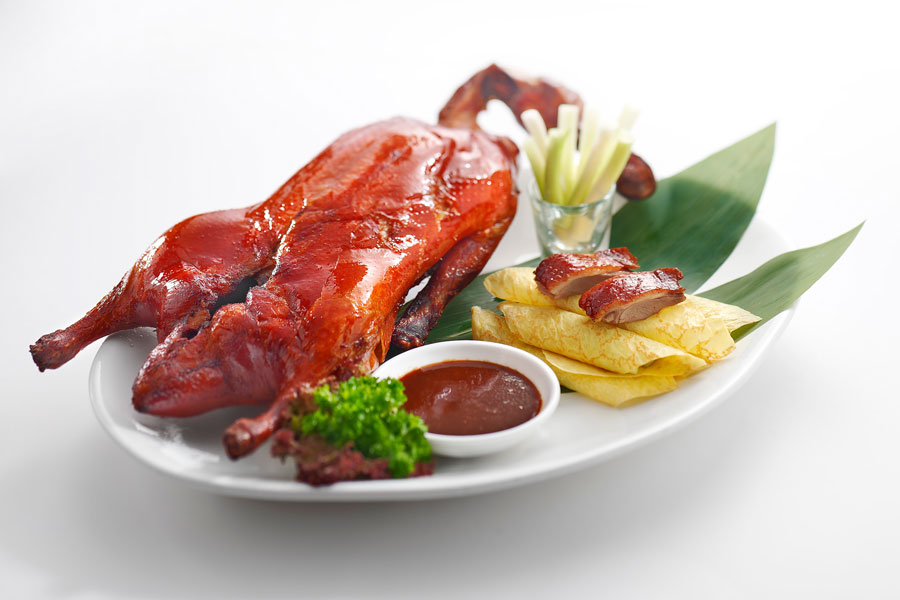
Duck is one of the favoured meats in Cao Bang, served in a number of dishes, such as flavoursome, marinated roast duck and fried duck cakes called Banh ap chao. Don’t miss these dishes out while you still can try.
3. Da Hien Vegetables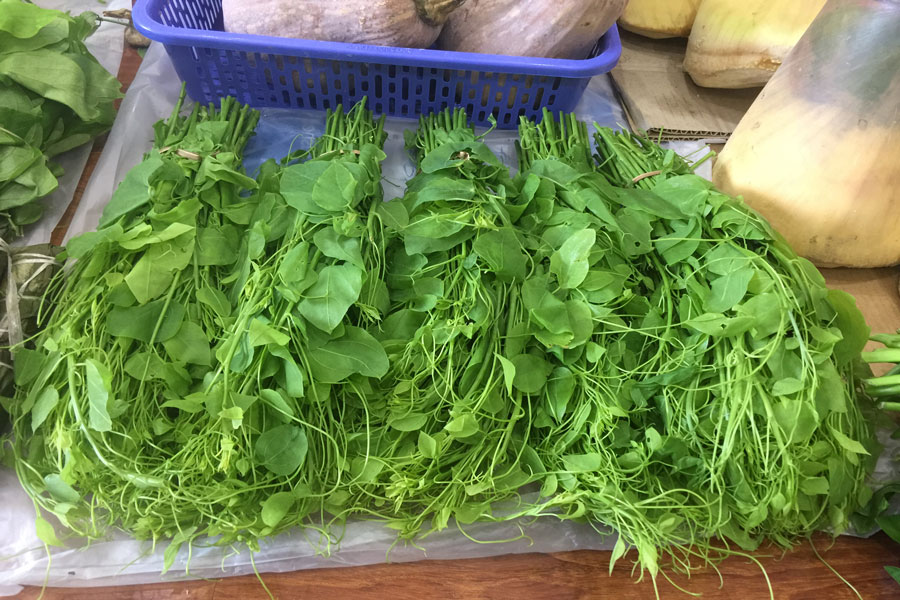
It’s also known as Bo Khai vegetables, often growing wild in the rocky areas, the constitution became a special vegetable of Cao Bang. This is a very crunchy, easily broken tree that is only harvested in the spring and summer season. It companies perfectly with dining meat (beef, pork…)
4. Xoi tram Cao Bang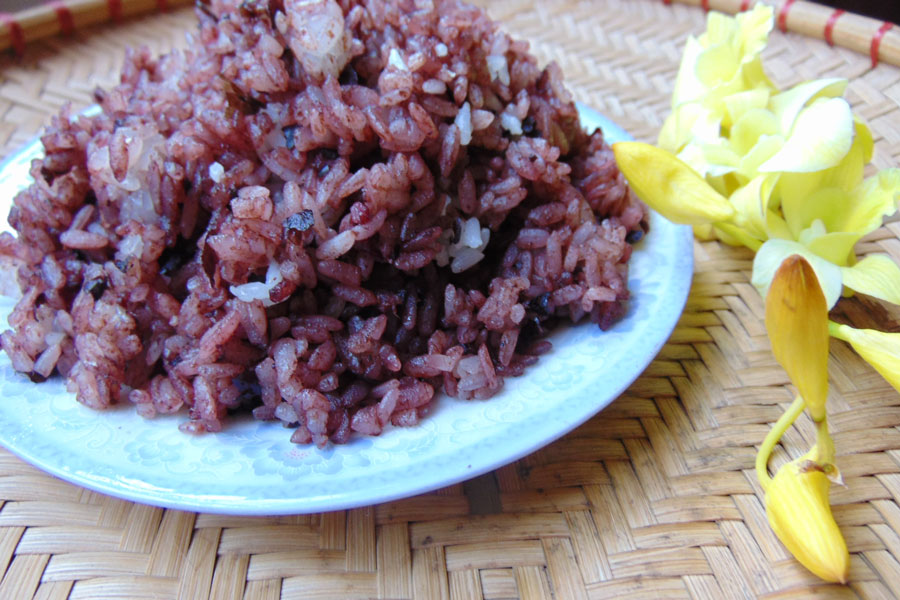
It is a regional take on the classic Vietnamese dish sticky rice which is mixed with fruit from the Carnarium tree to give it a rich purple colour.
5. Bitter tea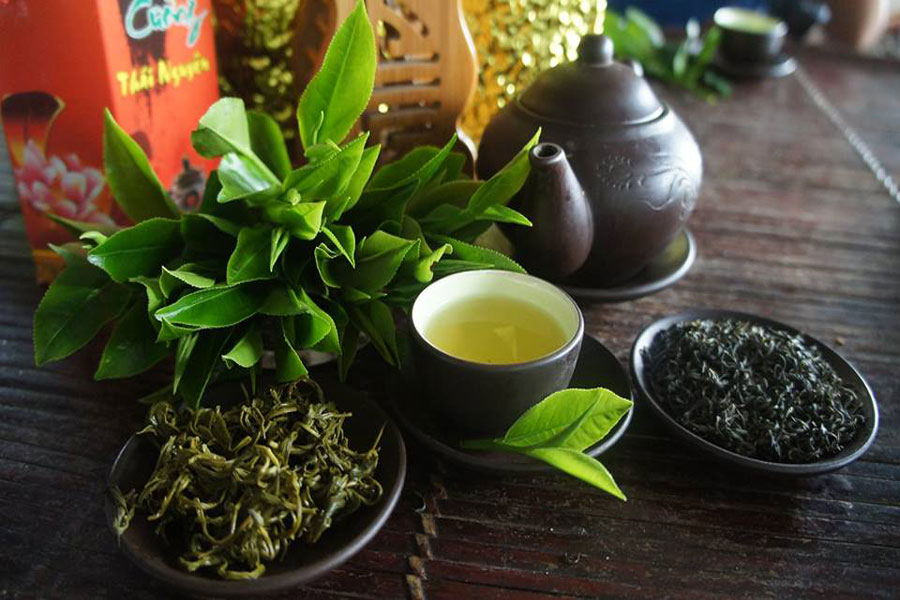
The tea plants thrive naturally in the area, growing to great sizes. The tea is claimed to have a medicinal effect and is available widely in Cao Bang.
6. Khao cake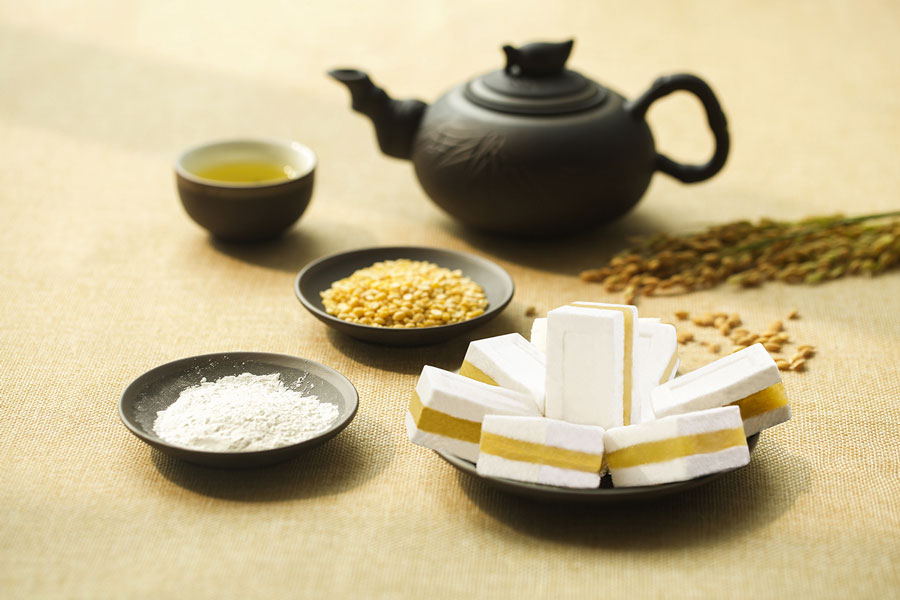
The cake is known as a rustic dish but contains a power. With baking ingredients from glutinous rice flour combined with fatty, peanut or sesame meat as a filling, the pastry has a delicious smell.
For most tourists, we often suggest a 2-day & 1-night itinerary, which includes various activities of outdoor exploration and culture discovery, for your best experience while traveling Cao Bang.
Day 1: Ban Gioc Waterfalls – Nguom Ngao Cave – Pac Bo Cave – Phuc Sen Forge Village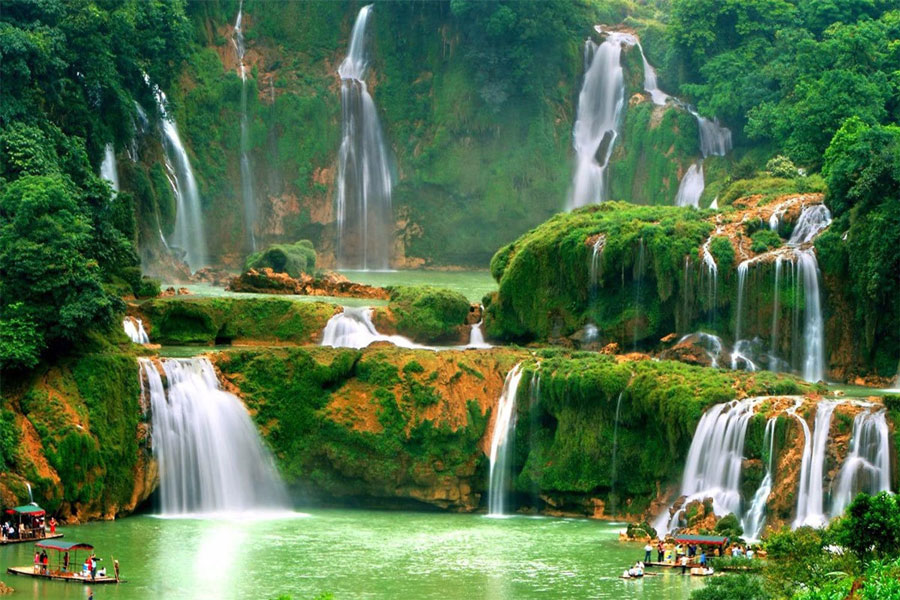
Visit Ban Gioc Waterfalls in the early morning to enjoy fresh air and breathtaking views. Take a tour to the nearby Nguom Ngao, Pac Bo Caves to witness the historical sites and experience the pristine landscape of Cao Bang. Then move to Phuc Sen Forge Village to learn about enthic culture and have a homestay with locals.
Day 2: Phia Oac – Phia Den Forest – Thang Hen Lake
Trek Phia Oac – Phia Den Forest to experience the mighty mountainous area. Then pay a visit to Thang Hen Lake to enjoy a peaceful ambience and have a total relax before preparing to return to Hanoi.
If you are a veteran backpacker, please feel free to manage the trip on your own and alter it when needed, else, we recommend you join a tour organized by a professional company that can free you from hassles and keep you safe throughout the journey.
The best time to visit Cao Bang is during the dry season, from October to April. It’s worth noting that North Vietnam can get quite cold during the winter months, from November to February, so pack accordingly. Rainy season — from May to September in North Vietnam — can be beautiful, just be prepared for hot and humid weather.
Aside from the weather heading up, you probably want to visit Cao Bang during its festive months, wherein special traditional events take place.
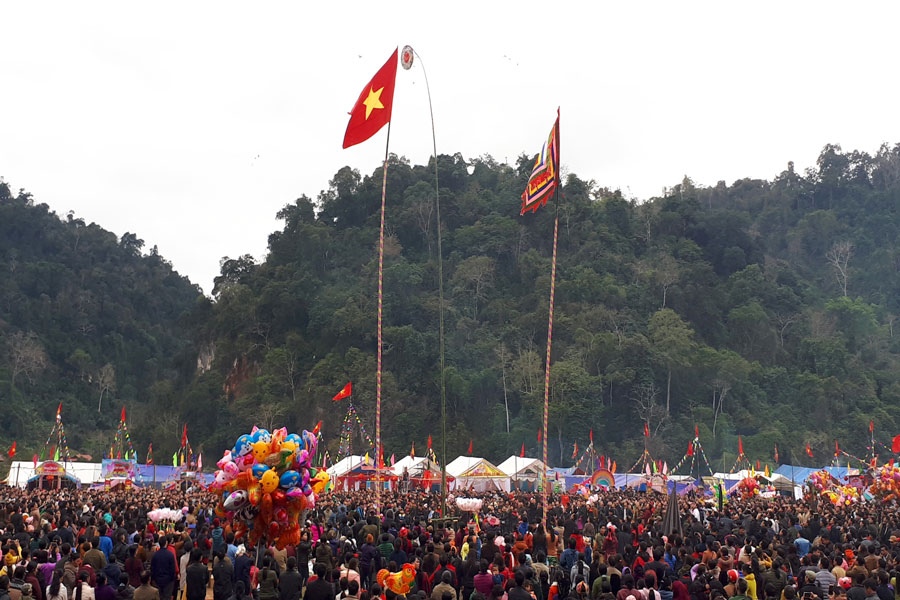
Long Tong Festival is one of the biggest Tay celebrations of the year. The festival takes place throughout many Tay villages in the north of Vietnam on the 4th day of the lunar year. The spring festival is a chance for the villagers to worship the god of agriculture and pray for prosperous crops in the upcoming year. People prepare offerings of food for the gods and then celebrate with a feast and lively traditional games.
Moi Me Trang, which means Mother Moon Festival, another Tay festival, held in the Dong Khe region of Cao Bang. This is also a spring festival which brings the local villagers together to celebrate and pray for prosperity. In particular, this festival is a chance to ask the moon for luck. The celebrations start with a beautiful ceremony of traditional singing and flower offerings which are followed by cultural activities and games.
To get to Cao Bang, you may consider travel by bus, my car, or by motorbike.

By public bus: There are comfortable, two-level sleeper buses departing Cao Bang from My Dinh Bus Station, Hanoi daily, which cost between VND190,000 – 250,000 and take about 8 hours of traveling.
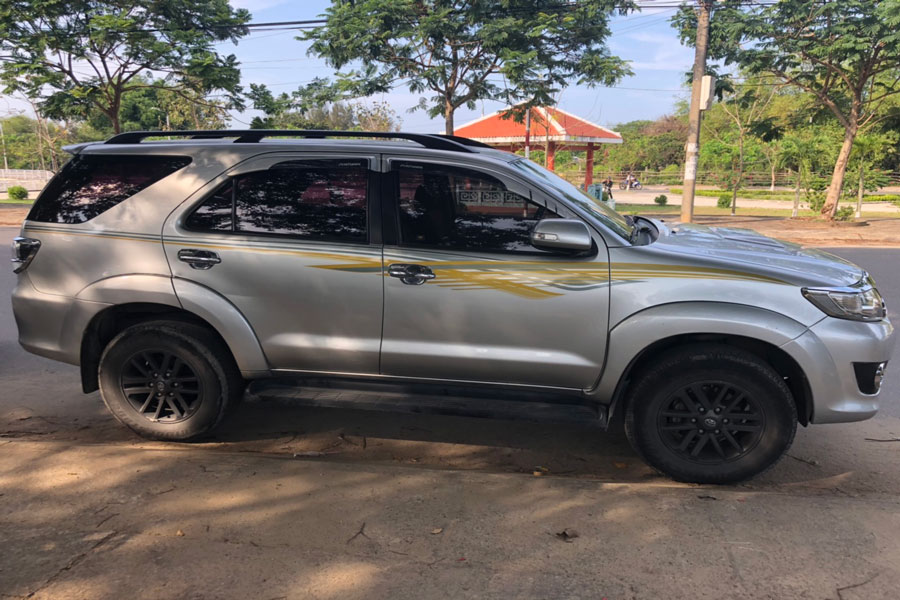
By private car: Alternatively, there is the option to hire a car and driver in Hanoi to drive to the region, which gives a very convenient and comfortable trip, but at a higher fair.
By motorbike: You can rent a motorbike to drive yourself from Hanoi to Cao Bang. Although renting a motorbike is not a big deal, we do not encourage you to do this, especially when you first come to Vietnam. Ensure your safety first.
Throughout this article, we wish you to have an idea of how to travel to Cao Bang for your best experience. In case you are looking for your own travel agent, who can offer a wonderful and hassle-free trip to Cao Bang, please feel free to let us know. We always commit our best to make it your once-in-a-lifetime journey.
 France
France  Spain
Spain  German
German  Italian
Italian 

 Vietnam Tours
Vietnam Tours  Cambodia Tours
Cambodia Tours  Myanmar tours
Myanmar tours  Thailand Tours
Thailand Tours  Laos Tours
Laos Tours